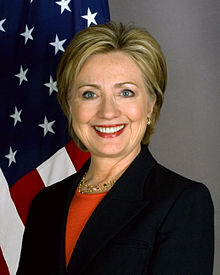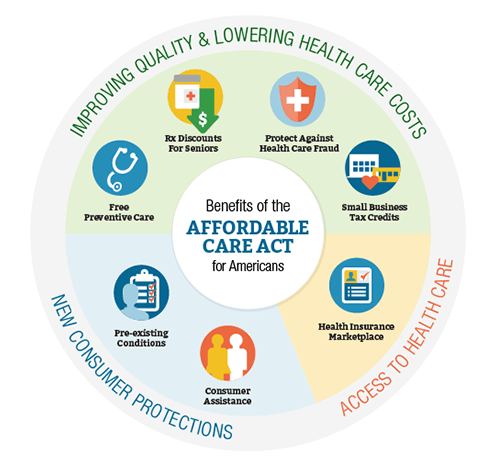Why Strengthening Affordable Care Act Could Cut Disparities
Despite the progress of the Affordable Care Act, there are still some disparities that people face in gaining healthcare access in this country.

- The Patient Protection and Affordable Care Act has significantly improved healthcare coverage and access throughout the country, but there are still some obstacles remaining to ensuring that every American has access to health insurance. While the latest statistics from the first quarter in 2016 show that the Affordable Care Act brought coverage to 27.3 million Americans, there are still people living without health insurance who have fallen into the coverage gap in states that have declined to expand their Medicaid program.

One study from the University of Miami School of Business Administration and the Florida Atlantic University College of Business published in the Health Services Research journal finds that young, low-income, and Hispanic populations still face disparities when it comes to healthcare access.
The solutions to these problems of continuing disparities in healthcare access may be to further expand the Medicaid program and build on the progress of the Patient Protection and Affordable Care Act, as explained in Presidential Nominee Hillary Clinton’s editorial in The New England Journal of Medicine. Both presidential candidates were given the opportunity to respond regarding their healthcare policies, but Donald Trump declined.
The statistics from the University of Miami study shows that the ACA health insurance exchanges allowed 11.7 million Americans to purchase health coverage while state Medicaid expansion brought healthcare access to 10.8 million more individuals. Also, more than 5 million young adults were able to remain on their parents’ health insurance plans under the Affordable Care Act as well, according to the White House website.
“The scientific research so far suggests that ACA's progress is encouraging, especially in terms of expanding coverage,” co-author Gulcin Gumus, Associate Professor of Management Programs, Health Administration at the Florida Atlantic University College of Business, told the source.

“Our paper provides the public with a non-partisan, scientific perspective on the initial impact of the Affordable Care Act,” Michael T. French, Professor of Health Sector Management and Policy at the University of Miami School of Business Administration, told the news source. “With new research studies on the ACA being published every month, another comprehensive status report will be necessary in the near future.”
Additionally, as many as 3.7 million American adults in states that have not expanded their Medicaid programs fall into a “coverage gap,” where their income is too high to be eligible for Medicaid but too low to be eligible for tax subsidies within the public health insurance marketplace.
Hillary Clinton wrote in her editorial that her cabinet will work toward expanding Medicaid coverage to the more than 3 million Americans that lack insurance in the 19 states that have declined to grow the Medicaid program. Clinton also looks to improve competition between payers, lower prescription drug costs, and reduce the costs of health insurance for the average consumer. Specifically, she calls for addressing the rising costs of insurance premiums.
The healthcare policy of the Democratic Presidential nominee seeks to create a refundable tax credit of $5,000 for families that have high out-of-pocket costs. Additionally, Clinton is looking to limit out-of-pocket costs for prescription drugs to $250 per month among all health plans.
Clinton hopes to expand effective medical care including mental health and dental care to “every American community” by boosting partnerships between public health departments and community-based organizations while chipping away at the fragmentation within the healthcare industry.
“Americans face rising out-of-pocket costs and a health care system that is too fragmented. We need to make health coverage affordable so people can access the care they need. We need to do more to break down barriers and achieve health equity across our communities. We need to expand Medicaid in every state so that everyone has access to care, regardless of their income and where they reside,” Clinton wrote in the editorial.
On the other side of the equation, Republican Presidential nominee Donald Trump's healthcare policies delve into repealing the Affordable Care Act including currently expanded Medicaid coverage, enabling consumers to purchase health plans across state lines, ensuring premiums are tax deductable, and allowing Americans to enroll in tax-free Health Savings Accounts, according to the Henry J. Kaiser Family Foundation. Additionally, price transparency is an important goal of both candidates while Trump also supports changing Medicaid into a block-grant program among states and allowing consumers to purchase prescription drugs from overseas.
In the editorial, the outcome of the solutions set forth may lead to increased healthcare access among the Americans still lacking coverage. Expanding upon the Affordable Care Act may benefit those still facing disparities when it comes to healthcare access around the country and especially in states that haven’t expanded Medicaid.
Image Credits: The Department of Health & Human Services
Dig Deeper:
How the Affordable Care Act Changed the Face of Health Insurance
How Payers Could Succeed in ACA Health Insurance Exchanges
